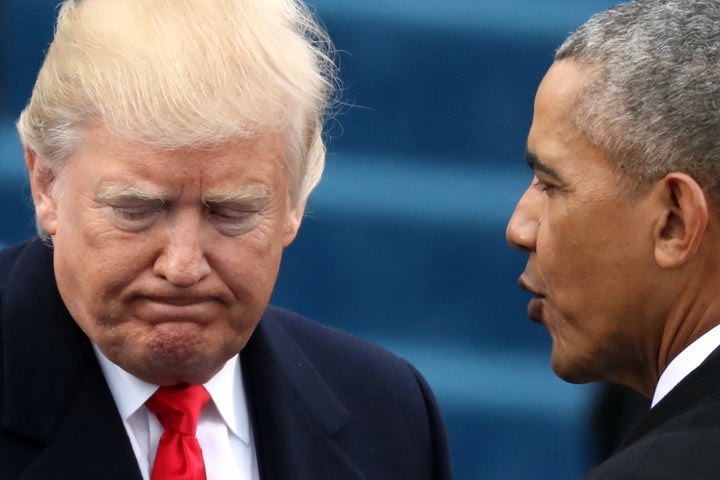
Salaried employees who work crazy hours may get some relief from the Trump administration after all. The question is how many of them.
On Monday, the Justice Department said it intends to appeal the decision that struck down President Barack Obama’s update to overtime regulations. The Trump administration plans to ask the court to sit on the case while the Labor Department “undertakes further rulemaking.”
The move suggests that President Donald Trump, like his predecessor, may try to extend overtime protections to more workers ― but given the usual Republican wariness about boosting workers’ pay by government fiat, probably not nearly as many as Obama had in mind.
Workers who are covered by overtime law must be paid time-and-a-half for any hours they work beyond 40 in a week. Over the decades, as nominal salaries rose, the percentage of Americans covered by overtime protections fell drastically. The Obama administration tried to reform the regulations so that an estimated 4 million additional salaried workers would be protected. Business groups sued, and the rules got bottled up in court.
Trump’s election last year appeared to signal the death knell for overtime reform, leaving retail outlets, among others, free to order managers and other salaried workers to log very long hours for no extra pay. In its appeal, however, the Trump administration is trying to preserve the right to update the law the same way that Obama did ― by raising the “salary threshold,” the level below which all salaried workers are entitled to overtime pay, regardless of their job duties.
Obama wanted to essentially double the threshold, from its current $23,660 per year to $47,476. It was an aggressive move: Millions of workers have salaries that fall between those two numbers. That’s why employers and their Republican allies were so fiercely opposed to Obama’s reforms.
If Trump did try to raise the salary threshold, he would likely propose a number that is far more palatable to the business lobby than $47,476. During his confirmation hearing, Labor Secretary Alexander Acosta floated the idea of $33,000. That would impact far fewer workers than Obama’s proposal, but the changes to the paychecks and schedules of those it did help could be significant.
Unlike hourly workers, very few salaried employees in the U.S. currently receive overtime pay. It wasn’t always like that. In 1975, roughly 62 percent of salaried workers were guaranteed time-and-a-half when they worked more than 40 hours. Because the regulations haven’t been updated much over the years, that share has plummeted all the way to around 8 percent. And that makes it much cheaper for employers to heap extra demands on their salaried employees.
But if the salary threshold were updated, those employers would have some tough decisions to make: either start paying certain workers more money or start keeping their hours in check. In theory, the workers would win either way, with bigger paychecks or more leisure time.
Earlier this year, HuffPost spoke to Katie Donley, a restaurant manager in Ohio who regularly clocked 60 hours a week for a salary in the mid-$30,000s. As her bosses prepared for Obama’s reforms to go into effect, they had stopped requiring Donley to work late, which gave her more time with her children. But once the reforms were thrown into limbo, her hours started creeping back up.
“I was never able to pick up my kids from school before,” Donley said. “It made a big difference to me. I don’t know how to describe it.”
Trump could still ease her situation. It all depends on how many workers the president wants to help and how many employers he’s willing to inconvenience.
